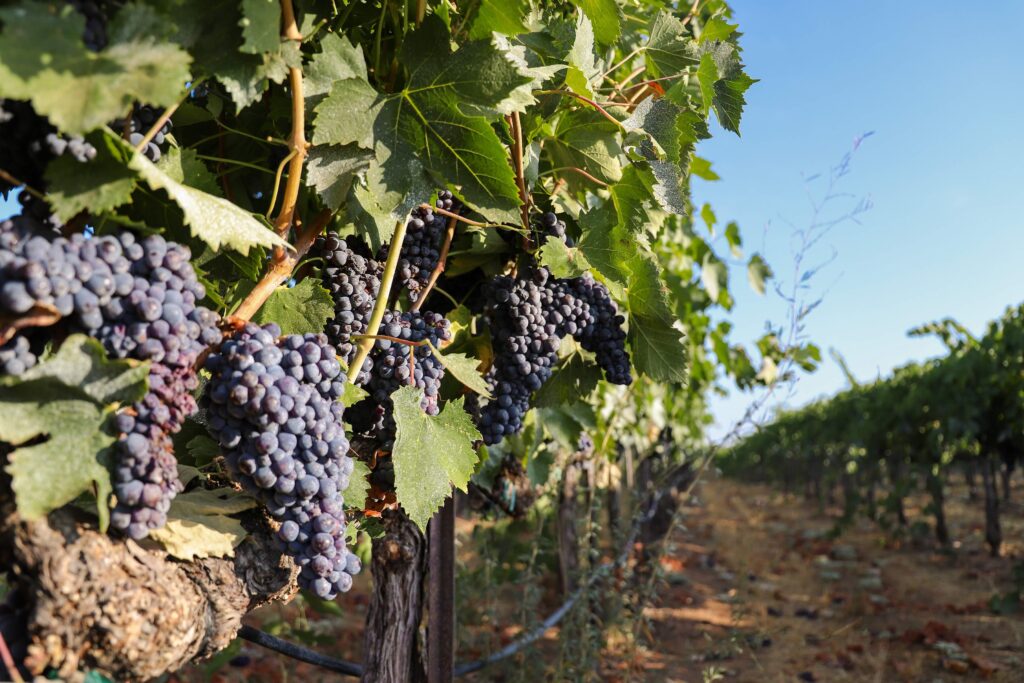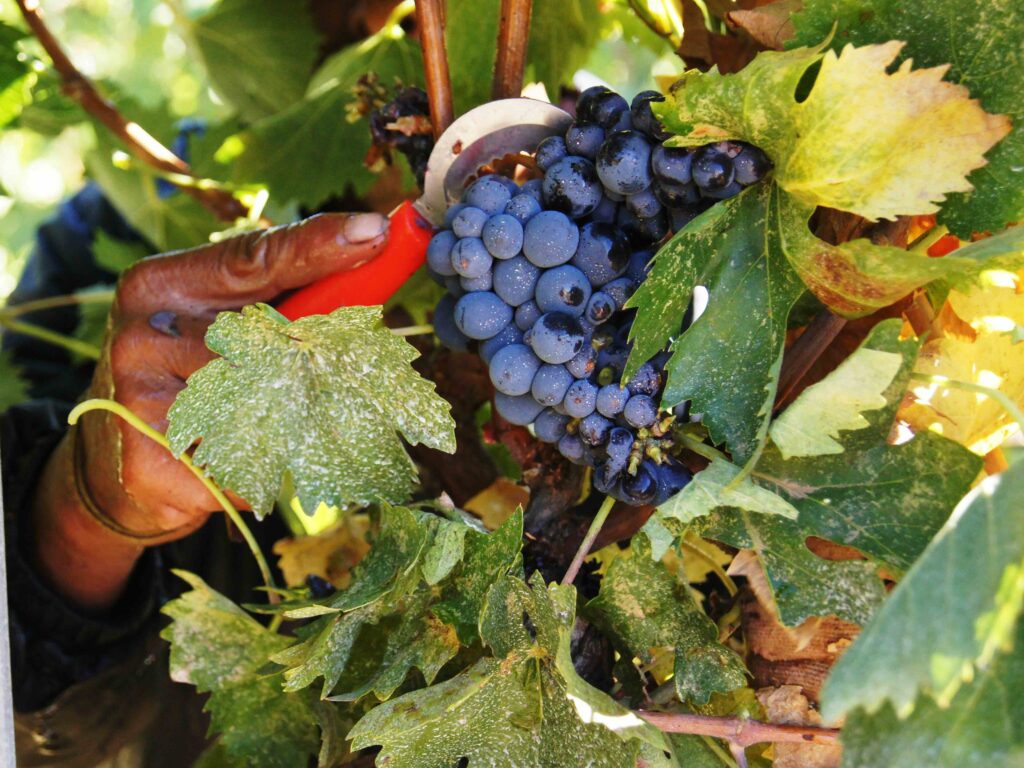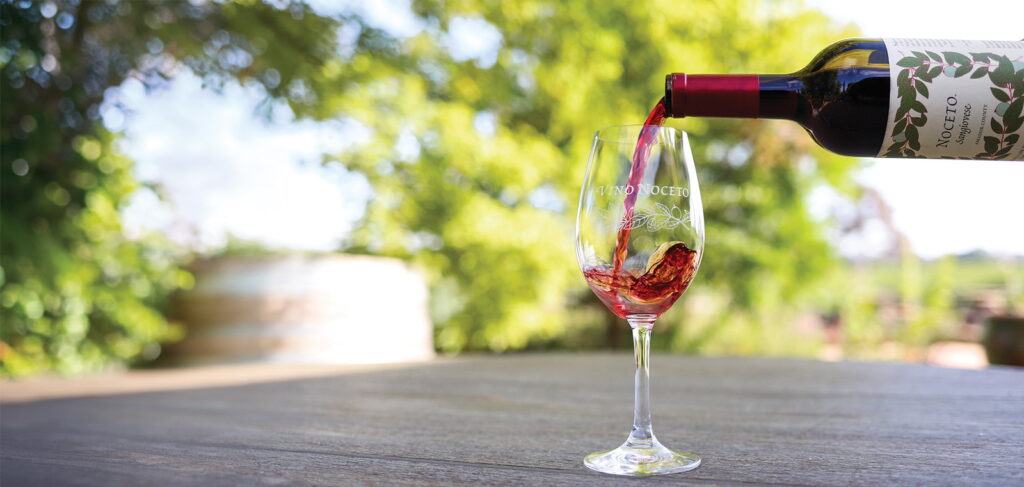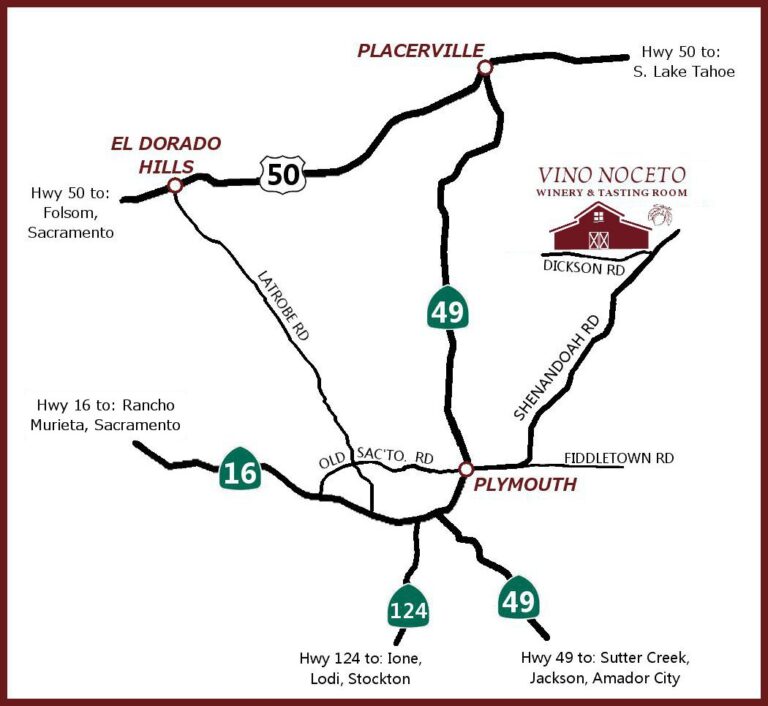What is Sangiovese? A Guide to the Italian Classic
California vs. Italian Sangiovese – What’s the difference?
Well, we can hardly believe it, but we’ve been walking this path with Sangiovese for over thirty years now. It feels like just yesterday we were first falling in love with this incredible grape, and here we are, celebrating decades of vintages!
Let’s jump right in and dig into Italy’s classic red grape. Join us as we discuss Sangiovese’s Etruscan roots, bright flavors, and more.

The Ancient History of Italian Sangiovese
Sangiovese is Italy’s most significant and widely planted grape variety. Grown on over 150,000 acres, it serves as the predominant variety in iconic Tuscan wines like Chianti, Brunello di Montalcino, and Vino Nobile di Montepulciano. Known for its ability to reflect its environment, Sangiovese is often described as a chameleon, capable of producing wines with a wide range of tastes, from earthy and rustic to bright and fruit-forward.
It’s theorized that the grape may date back to Roman times or was perhaps even first cultivated by the Etruscans in Tuscany. However, the first documented mention of Sangiovese was in the writings of Giovanvettorio Soderini in the 1590s, who noted that “Sangiogheto” grapes in Tuscany made very good wine but required careful winemaking to avoid turning to vinegar.
Sangiovese began its slow rise to Italian fame in the 18th century, when it was often blended with Canaiolo, Malvasia, and Trebbiano. Back in those days, Canaiolo was the hero grape in most Chianti blends. (Italian wines are typically named after the region in which they are made, and Chianti is a smaller subregion within Tuscany.)
In the late 19th century, Sangiovese’s place in the Chianti hierarchy drastically shifted. Baron Bettino Ricasoli – a landowner and descendant of Chianti wine producers – decided that he was done with all these willy nilly field blends with their inexact proportions of Canaiolo to Sangiovese to Trebbiano. After experimenting with different ratios of Italian and Tuscan grapes, the Baron determined the ideal recipe for Chianti reds, and his recipe was dominated by Sangiovese. After that, Sangiovese spread through Italy like wildfire. (Though, notably, grapevines are fairly fire resistant.)

A Current View: Sangiovese across Italy
Today, Sangiovese’s primary home is central Italy, with the vast majority of its global plantings concentrated in Tuscany. Within Tuscany, Sangiovese thrives in diverse subregions like Chianti, Montalcino, and Montepulciano. It is the sole grape used in Brunello di Montalcino and Vino Nobile di Montepulciano as well as the primary component of Chianti – Chiantis are at least 70% Sangiovese and Chianti Classicos are at least 80%.
Outside Tuscany, Sangiovese is Italy’s “workhorse” grape, playing a role in notable wines like Montefalco Rosso, Rosso Conero, and Torgiano Rosso Riserva.
Sangiovese is especially prone to mutation and highly variable based on its growing conditions, so a Sangiovese made in Chianti can be wildly different from one produced in Montalcino. Winemakers utilize the varied terroirs within these regions to craft wines reflecting unique nuances. In the next section, we’ll tell you more about those varied flavor profiles.
Tasting the Nuances: Flavor Profile and Aging Potential
Sangiovese is renowned for its savory character. Its primary fruit flavors typically include tart cherry, red plum, and strawberry, sometimes with notes of fig. Beyond fruit, characteristic non-fruit notes can range from roasted pepper and tomato to leather, clay, brick, tobacco, and smoke. Herbal notes like oregano and thyme are also common. As the wine ages, aromas can evolve towards dried cherries, figs, and dried roses or potpourri.
The two most well-known Sangiovese-based Italian wines are Chiantis and Brunello di Montalcinos. As noted before, Chiantis are at least 70% Sangiovese, whereas Brunellos must be 100% Sangiovese. While both wines showcase the typical cherry-berry, tomato, and tobacco characteristics of a Sangiovese, Brunello di Montalcino is generally more concentrated, powerful, and structured due to the specific clone and stricter aging regulations. Relative to a Chianti, it has a darker fruit profile and more pronounced tannins. Chianti, in contrast, often emphasizes brighter fruit and higher acidity.
While many Sangiovese wines are intended for relatively early consumption (within 3-4 years), the grape has significant aging potential. Premium wines like Brunello di Montalcino and Super Tuscans can age for upwards of 18-20 years or more in ideal vintages, often requiring 5-10 years to fully develop.

California vs. Italian Sangiovese – What’s the difference?
Italian Sangiovese, particularly from Tuscany, is considered the benchmark. It often exhibits a profile of bitter-sweet cherry, violet, tea, and sometimes tomato notes, with styles ranging from rustic and earthy to fruit-forward. These wines are deeply tied to their specific terroirs and often have notable aging potential, especially Brunello di Montalcino and top Chianti Classico Riserva examples.
In the late 1980s, Vino Noceto was among the early pioneers of varietal Sangiovese in California, alongside producers like Caparone and Atlas Peak. We remain one of the few wineries in the state primarily focused on Sangiovese, and as Mike Dunne of the Sacramento Bee says, “My favorite domestic Sangiovese wines come from Vino Noceto in the Shenandoah Valley of California.”
California’s Sangiovese style tends to be more fruit-driven compared to many Italian versions, sometimes showing Zinfandel-like spice or darker fruits depending on blending. And generally, Californian examples of Sangiovese are considered to have a shorter aging potential than their most age-worthy Italian counterparts. Noceto’s wines, however, are specifically crafted to match the aging potential and style of Italian-style Sangioveses.
Our Sangiovese Originale, for example, is modeled after a Chianti Classico, and its light, bright, cherry-berry tartness sings with tomatoes and pizza. Similarly, our Riserva Sangiovese is modeled on Brunello di Montalcinos and has a deeper, more velvety palate that pairs wonderfully with steak or chicken. From our experience, both Noceto Sangioveses hold on to their structure and flavor well into their second decade of aging. If you stop by the Tasting Room or shoot us an email, we’re also happy to make recommendations for some of our other favorite California Sangiovese producers.
Perfectly Paired: Sangiovese and Food
Sangiovese’s naturally high acidity and savory character make it an exceptionally food-friendly wine, pairing well with a wide range of dishes. Its savory notes match beautifully with herbs and tomatoes, which naturally accentuate the wine’s fruitier characteristics.
One of the most classic and beloved pairings is Sangiovese-based Chianti with tomato-based pasta and pizza sauces. Much like a Chianti, our Sangiovese Originale was crafted with bright flavors designed to cut through the richness of red sauces and complement tomato’s acidity.
For wines with higher tannins, like Brunello di Montalcino or our Riserva Sangiovese, rich roasted meats, cured sausages, and hard cheeses are excellent partners.
Frequently Asked Questions about Sangiovese
Is Sangiovese dry or sweet?
Typical red Sangiovese wines, including iconic examples like Chianti and Brunello di Montalcino, are generally bone-dry. They are characterized by high acidity and noticeable tannins. However, any wine can be made sweet! In the process of fermentation, sugar is converted into alcohol. At any point in this process, you can stop the fermentation without converting all of the sugar into alcohol. So any grape, including Sangiovese, can be made into Vin Santo-style sweet wines. That said, it’s rarely done with this particular red grape.
What are the best food pairings for Sangiovese?
Sangiovese is highly versatile with food due to its acidity and savory profile. Classic pairings include tomato-based Italian dishes like pasta with marinara or Bolognese sauces, and pizza. The wine also pairs well with roasted or grilled meats, cured sausages, and hard cheeses, especially those with higher tannin levels. Dishes seasoned with herbs like oregano, thyme, basil, or sage are complementary. For vegetarian options, pairing with rich ingredients like olive oil or butter helps balance the tannins. Fuller-bodied Sangiovese blends work with heavier dishes like steak.
Are Chianti and Sangiovese the same?
Chianti is a hilly area between Florence and Siena in Italy. In order to be labeled with the word “Chianti,” wine made in this region must be at least 70% Sangiovese. That said, some Chiantis are 100% Sangiovese. So to answer the question, sometimes Chianti and Sangiovese are the same, but Chiantis are typically less than 100% Sangiovese and frequently have other grapes like Cabernet Sauvignon, Canaiolo Nero, Cabernet Franc, Merlot, and Syrah blended in with the Sangiovese. Sometimes white grapes like Trebbiano and Malvasia are even added into the mix!
Can you make white wine from Sangiovese?
Yes! The color in red wines comes from the skin of the grape, rather than the interior juices. When making a red wine, the juice usually ferments with the skin for 7-10 days. When making a rosé, the juice and skin soak together for about 24 hours. If you want to make a white wine, however, you simply immediately separate the red-purple skins from the clear juice. (Fun Fact: Orange wines are made by fermenting white grapes with their skin.) Noceto makes a Sangiovese Bianco (White Sangiovese) with this skin-juice separation method. It was the first White Sangiovese ever produced in California.

Amador County Tasting Room
Walk-ins welcome! Come on by for a visit. We’ll bring the wine.
Tasting Room Hours
Weekdays: 11AM – 4PM
Weekends: 11AM – 5PM
11011 Shenandoah Road
Plymouth, CA 95669
Contact Information
Tasting Room: 209.245.6556 X2
Office: 209.245.6556 X4
Text: 209.286.7840
Email: vino@noceto.com